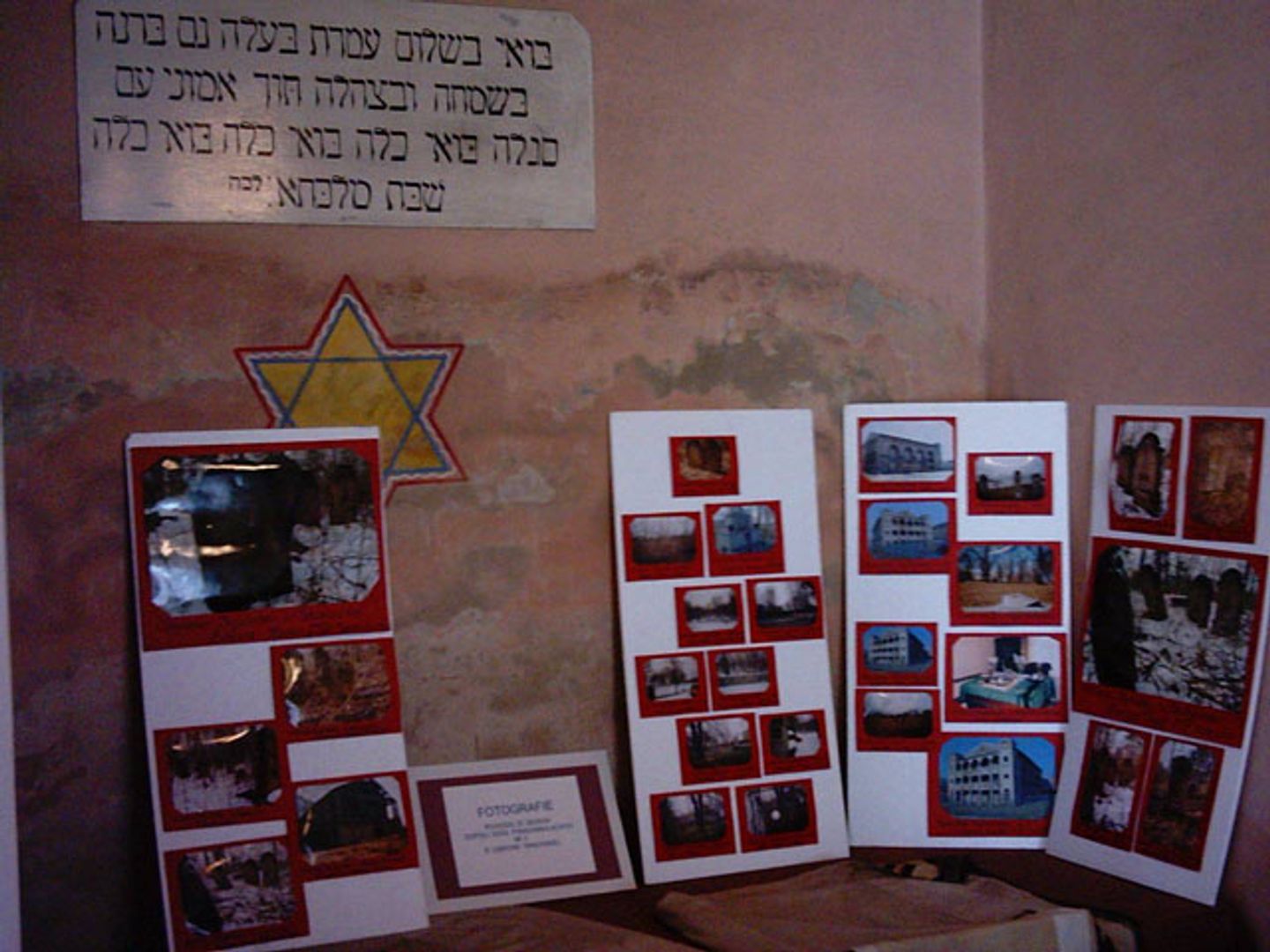Dąbrowa Tarnowska Synagogue
6.79

Overview
The synagogue in Dąbrowa Tarnowska was established in 1972 by the Roth family in a private apartment, due to a ban on prayers in the main synagogue, which was undergoing renovation. It operated until December 1995, when its last faithful member, Samuel Roth, passed away. In his will, he bequeathed the synagogue to his niece Cesia Nesselroth in Australia. In 1996, thanks to the initiative of the editor-in-chief of "Kurier Dąbrowski," Jerzy Rzeszuto, and the local authorities, the Judaic Museum was established, now known as the Jewish Memorial Room. The City Council committed to maintaining the Jewish cemetery in exchange for the free transfer of the premises. The synagogue underwent renovation—windows were barred, exhibits were organized, and walls were cleaned, revealing yellow Stars of David and Hebrew inscriptions. The prayer hall retains its original furnishings, including the Aron Kodesh covered by a parochet and paintings depicting the Tablets of the Decalogue. The walls feature inscriptions welcoming the faithful and emphasizing the importance of the Torah. The exhibition also includes liturgical objects such as synagogue candlesticks, tefillin, and around 200 liturgical books from the Dąbrowa community. The museum's anteroom contains memorabilia of Samuel Roth, including photographs and documents. There is speculation that Torah scrolls may have been taken out of Poland before the museum was established. The custodian of the collection is the Municipal Cultural Center. The synagogue in Dąbrowa Tarnowska was the last active synagogue in the town and the only functioning shtiebel in Western Galicia.
Location
2025 Wizytor | All Rights Reserved